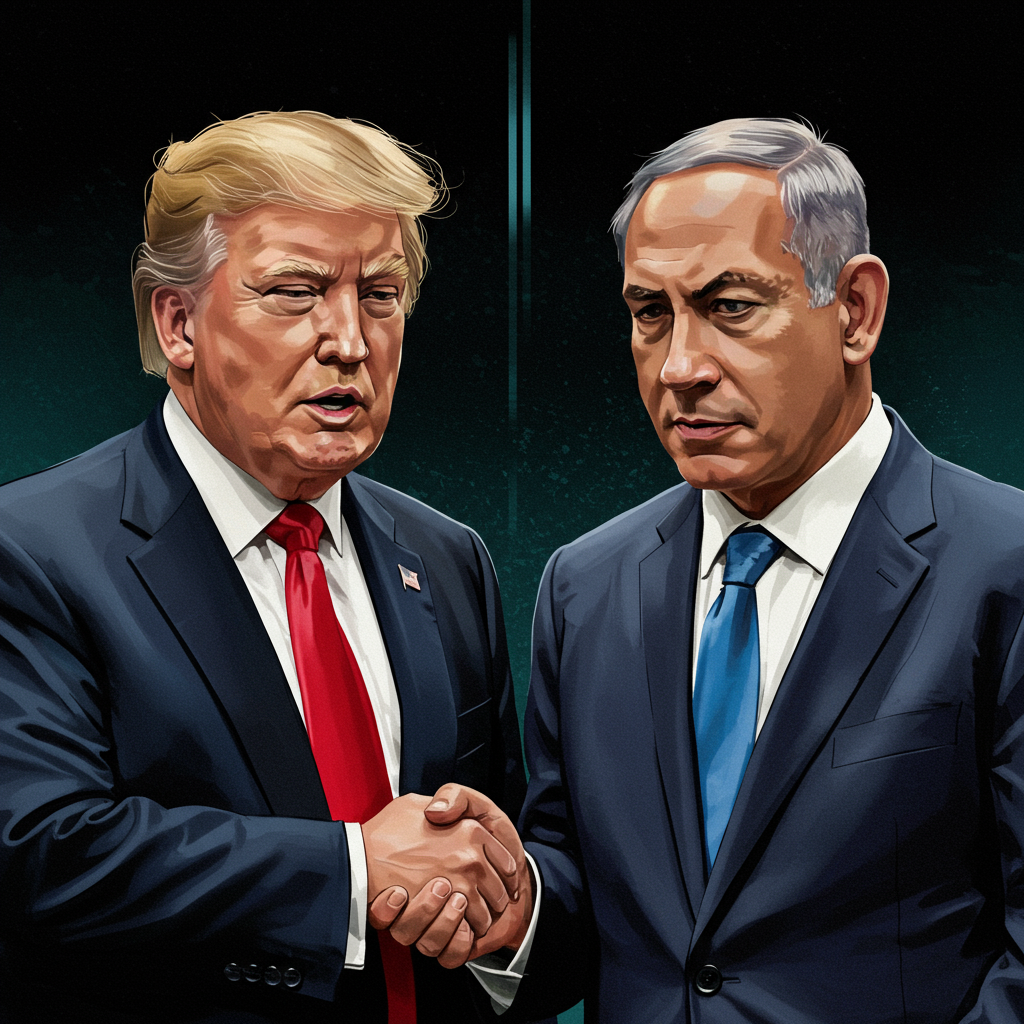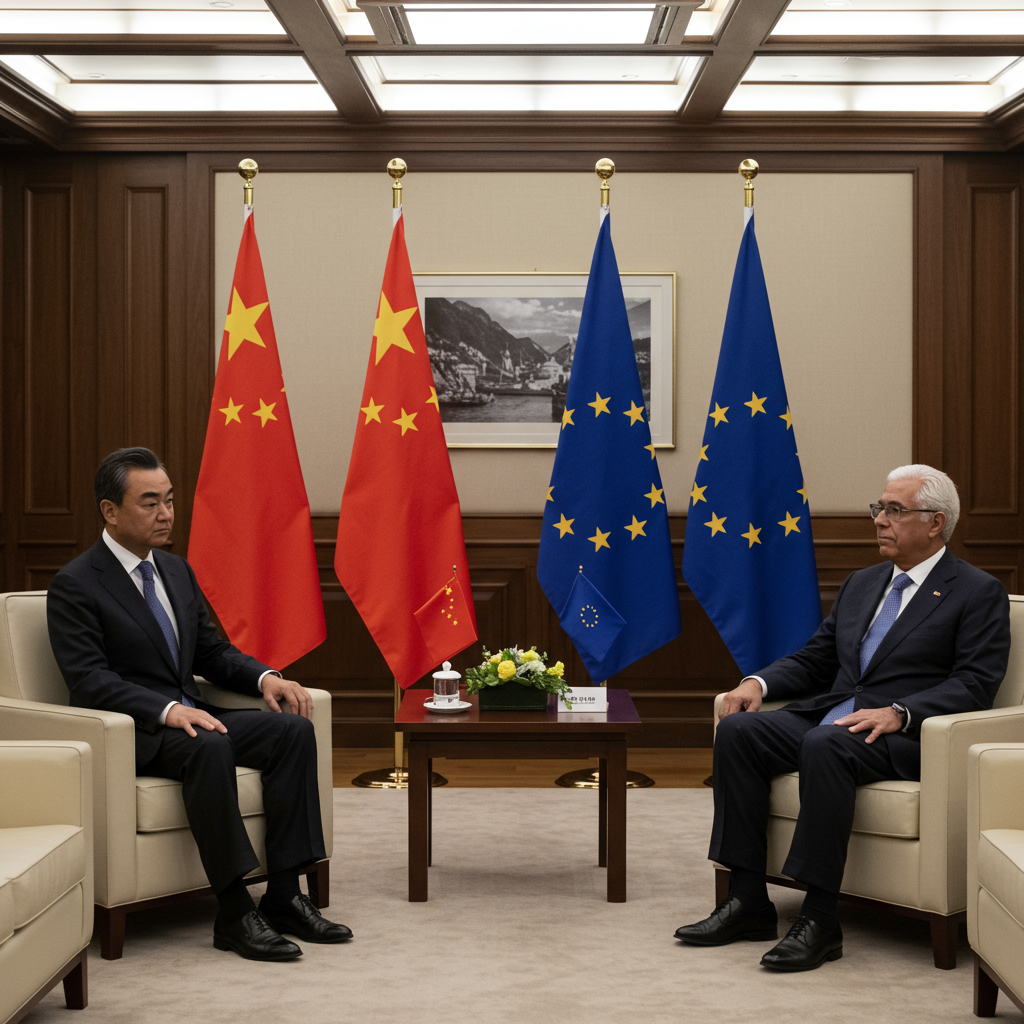israeli Prime Minister Benjamin Netanyahu travels to Washington D.C. for a critical meeting with U.S. President Donald Trump. This high-stakes summit centers on intense diplomatic efforts to secure a ceasefire and hostage release deal in the ongoing Israel-hamas conflict in Gaza. The visit marks Netanyahu’s third trip to the White House since President Trump returned to office, occurring amidst complex geopolitical dynamics and persistent fighting on the ground.
The meeting comes at a pivotal moment, following a period of heightened tensions and joint actions between the U.S. and Israel targeting Iran. With attention now shifting from confronting Iran to ending the devastating war in Gaza, President Trump has significantly intensified his efforts to broker a resolution. White House officials emphasize that ending the Gaza conflict is a top priority for the administration, driven by a stated desire to save lives and influenced by “heartbreaking” images of the conflict’s impact on both sides.
The Core Stalemate: Competing Demands for Gaza’s Future
Despite the urgent diplomatic push, efforts to finalize a ceasefire remain stalled by fundamental disagreements between Israel and Hamas regarding the conflict’s ultimate conclusion. At the heart of the impasse is the future of Hamas’s presence and control in Gaza.
Prime Minister Netanyahu arrives in Washington with an unyielding stance: Israel will not agree to any ceasefire that allows Hamas to retain its military and governing capabilities in Gaza. He has explicitly stated that ensuring Gaza no longer poses a threat – preventing future attacks, kidnappings, and violence – necessitates the complete elimination of Hamas’s operational and administrative structure. Furthermore, Netanyahu envisions an indefinite Israeli military presence in Gaza post-conflict, with civil governance eventually transferred to local officials unaffiliated with either Hamas or the Palestinian Authority.
Conversely, Hamas negotiators reportedly insist that any truce agreement must include concrete guarantees for a complete end to the war and the full withdrawal of Israeli troops from the enclave. This demand directly clashes with Israel’s objective of dismantling Hamas entirely. Previous negotiation attempts, including a potential eight-week ceasefire earlier in the year, reportedly collapsed over this very point of contention.
Diplomacy in Washington and Doha
The diplomatic track is currently operating on multiple fronts. While Prime Minister Netanyahu engages directly with President Trump in Washington, Israel is also sending a separate negotiating team to Qatar, a key mediator, for indirect talks with Hamas representatives. These parallel discussions aim to bridge the significant differences that have repeatedly derailed previous attempts.
The current proposal reportedly being discussed in Doha includes an initial 60-day truce period. During this phase, Hamas would release a specific number of hostages in exchange for increased humanitarian aid entering Gaza. Approximately 50 hostages are still believed to be held captive, with less than half thought to be alive. The current proposal reportedly specifies the release of 10 living hostages and the bodies of 18 others. However, Netanyahu’s office recently indicated that Hamas is seeking “unacceptable” changes to the current proposal, likely related to the guarantees regarding the war’s end.
Despite these significant obstacles, President Trump has expressed public optimism about the prospect of a breakthrough. Speaking on Friday, he suggested that a ceasefire agreement could potentially be reached “within the next week,” though he did not provide specific details on the basis for this prediction.
The Ongoing Reality in Gaza
As diplomatic maneuvers unfold at the highest levels, the grim reality of the conflict persists on the ground in Gaza. Reports from hospital officials indicate that Israeli airstrikes continue to result in civilian casualties. On Sunday alone, officials reported at least 33 Palestinians killed in strikes across the enclave, including incidents impacting residential structures and areas where displaced people are sheltering.
The Israeli military confirmed extensive operations in Gaza, stating they struck over 100 targets, including command centers, weapons caches, and launchers, and killed militants. However, the military offered no immediate comment on the specific incidents reported by hospital sources. The ongoing fighting underscores the urgent need for a resolution, with local health authorities reporting a staggering death toll since the war began following the October 7, 2023, Hamas attack on Israel.
Broader Geopolitical Context: Iran and U.S. Support
The summit also takes place with the recent U.S. and Israeli actions against Iran’s nuclear program as a significant backdrop. The meeting is partly framed as a victory lap for Netanyahu following these joint operations. However, questions linger regarding the long-term effectiveness of these strikes in setting back Iran’s nuclear ambitions. Preliminary U.S. intelligence assessments suggest the strikes caused “significant damage” but did not result in the “total destruction” of key facilities. International Atomic Energy Agency (IAEA) officials similarly noted that while capabilities were damaged “to an important degree,” some infrastructure remains, meaning Iran could potentially resume activities if it chooses. Access for inspectors remains crucial for a full assessment.
Amidst this complex regional picture, the United States continues to reaffirm its commitment to Israel’s security. Coinciding with the diplomatic push, the Trump administration recently approved a new $510 million arms sale to Israel. This package includes over 7,000 guidance kits for Joint Direct Attack Munitions (JDAMs). While relatively modest compared to the substantial annual U.S. military aid, these precision munitions are vital tools for Israel’s ongoing operations in Gaza and its defensive capabilities against regional threats. The State Department justified the sale as being consistent with U.S. national interests and vital to assisting Israel’s self-defense.
Adding another layer of political complexity to the meeting, President Trump has also publicly intervened in Israeli domestic affairs. He recently called for the dismissal of corruption charges against Prime Minister Netanyahu in his ongoing trial, labeling the proceedings a “WITCH HUNT” and pledging U.S. support to “save” Netanyahu. This direct engagement in Israel’s judicial matters has reportedly caused some unease within the Israeli political establishment.
Ultimately, Prime Minister Netanyahu’s visit to Washington is a multifaceted event. While ostensibly a symbol of strong U.S.-Israel ties and joint action against regional adversaries like Iran, its primary focus remains the extraordinarily challenging task of finding a path to end the devastating conflict in Gaza. Reconciling Israel’s demand for Hamas’s elimination with Hamas’s demand for an end to the war represents the central, perhaps insurmountable, hurdle in achieving President Trump’s urgent goal of a ceasefire. The discussions in Washington and Doha this week will reveal whether any common ground can be found to alleviate the ongoing humanitarian crisis and bring an end to the fighting.
Frequently Asked Questions
What is the main obstacle preventing a Gaza ceasefire deal discussed in the article?
The primary obstacle is the fundamental disagreement over Hamas’s future. Israeli Prime Minister Netanyahu insists on the complete elimination of Hamas’s military and governing capabilities in Gaza, refusing any deal that allows them to remain in power. In contrast, Hamas demands that any ceasefire agreement must guarantee a permanent end to the war and the withdrawal of Israeli troops from Gaza. These directly opposing demands have caused talks to repeatedly stall.
How does the recent U.S.-Israel action against Iran relate to Prime Minister Netanyahu’s visit?
The visit follows recent joint actions by the U.S. and Israel targeting Iran’s nuclear facilities. The meeting is partly seen as a positive marker of cooperation in this area. However, attention has now shifted significantly towards brokering a Gaza ceasefire. While Iran and regional security remain backdrop issues, the urgent push for an end to the fighting in Gaza is the central focus of the summit.
What is the current status of the hostages held in Gaza according to the information in the article?
According to reports cited, approximately 50 hostages are believed to remain captive in Gaza. Less than half of these hostages are thought to be alive. The current proposal being discussed in indirect talks reportedly includes the release of 10 living hostages and the bodies of 18 others as part of an initial 60-day truce phase. Securing the release of all remaining hostages is a key component of the ceasefire negotiations.


